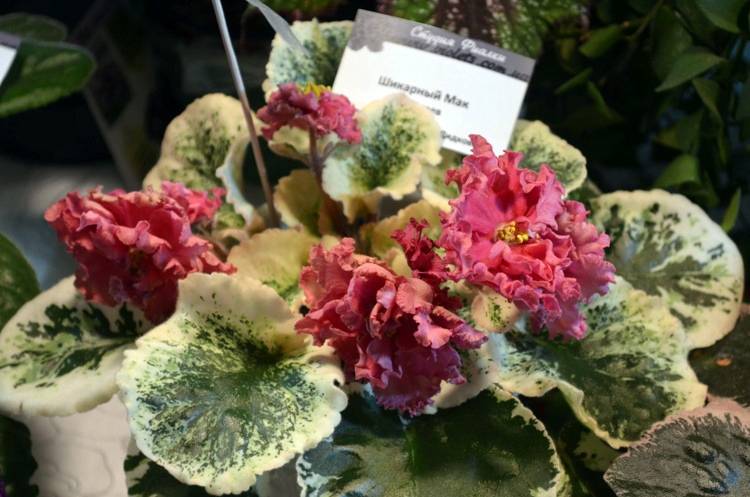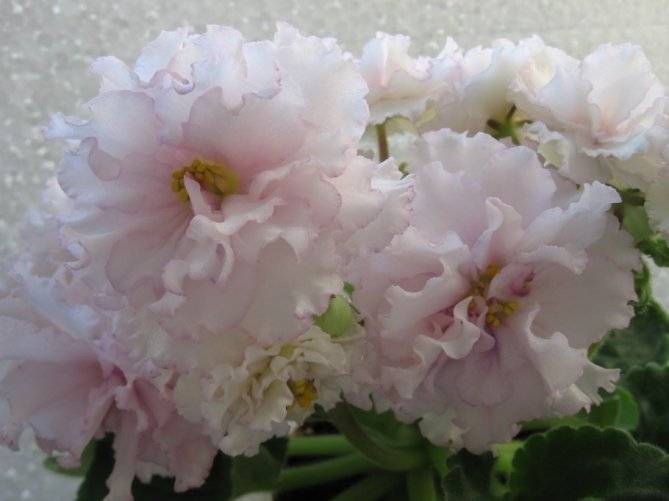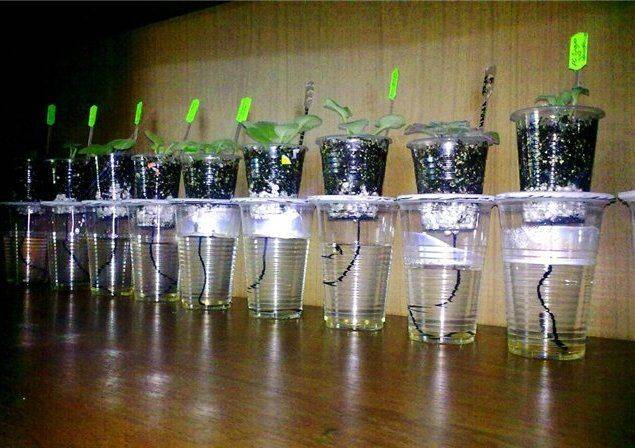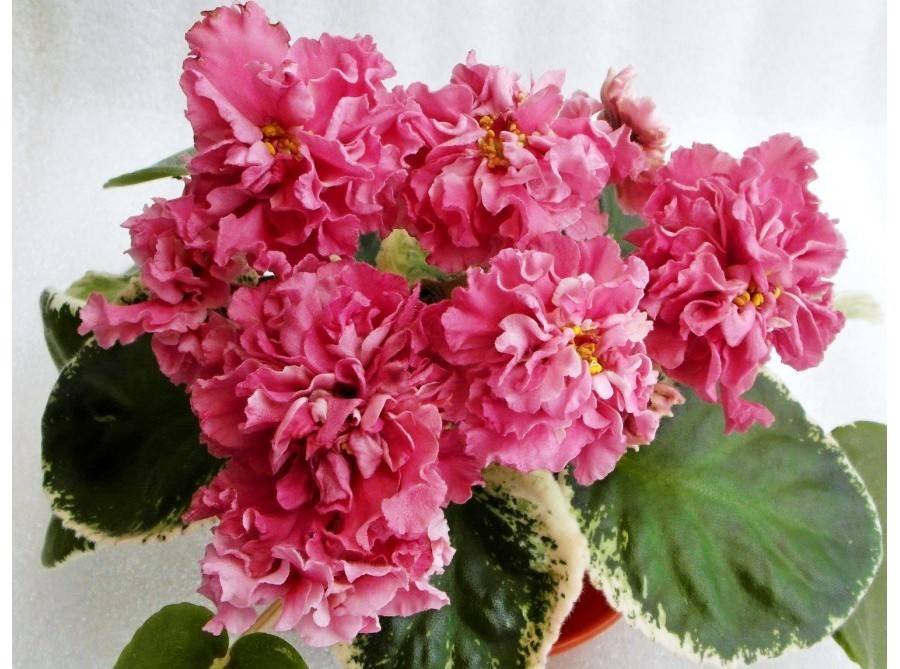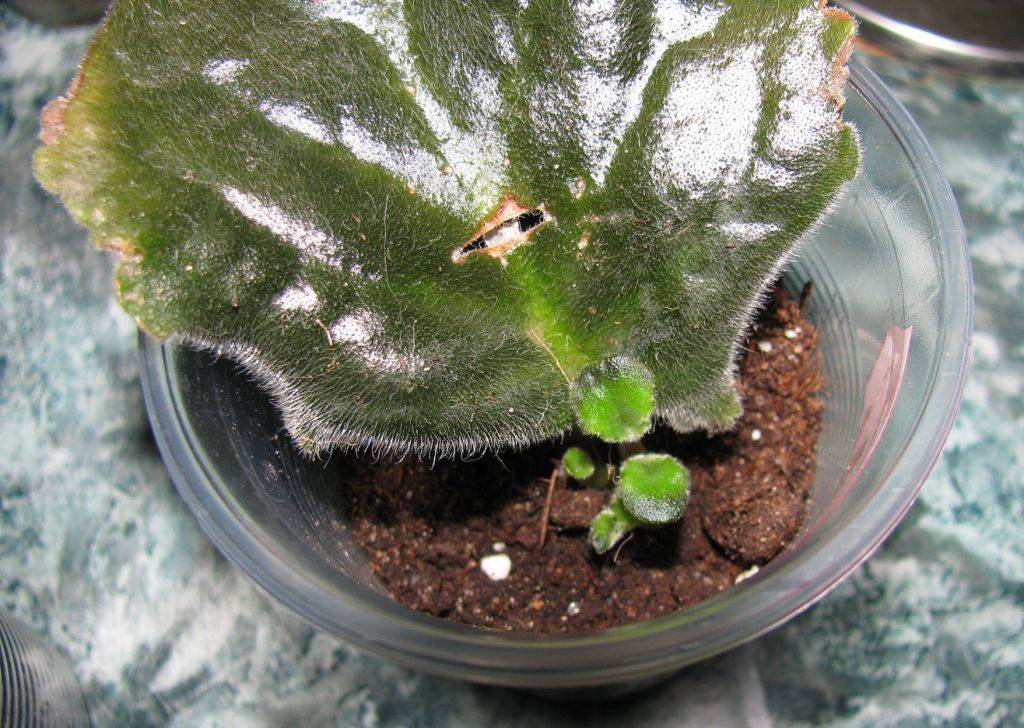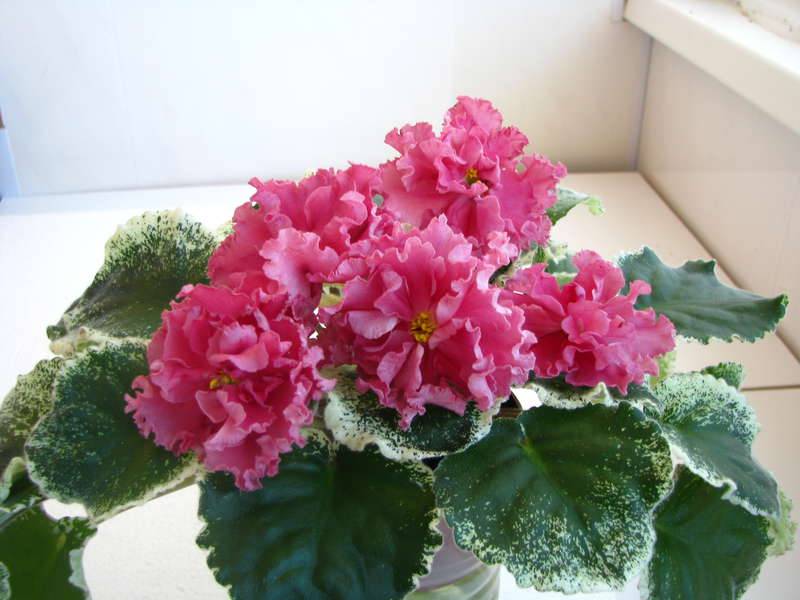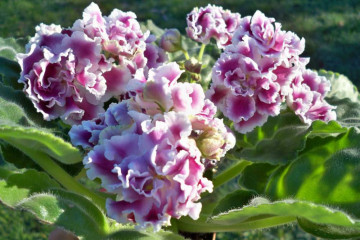Violet "Chic poppy" - description and characteristics of the variety
Content:
When purchasing indoor flowers, many opt for violets. Refined and delicate flowers, beautiful and intriguing in their variety of species and varieties, are considered the keepers of family comfort. Admiring the long flowering, do not forget about the peculiarities of caring for the plant at home.
The history of the appearance and characteristics of the flower
Saintpaulia The chic poppy is one of the most popular and interesting species that attracts attention with brightly colored double flowers and non-standard colors and leaf width.
The chic poppy is the work of the breeder Konstantin Morev. The seedling was bred in 2013 and immediately found its fans. It is sad that this filka was not recognized as a variety, although it is also a frequent visitor to international exhibitions and private collections.
Bright shades of red and orange are the first distinguishing feature of peduncles. Another nice feature is the abundantly growing babies. Sometimes there are so many of them that they directly fall out of the pot.
The leaves forming a rosette change in color from a green base to white at the edges. There are also quite white. Peduncles can be up to 8 cm in diameter. Young plants often drop buds under their weight.
As the violet grows older, the poppy grows stronger and pleases with a long flowering. The velvet petals unfold slowly, like a poppy bloom. Shades change from pale pink tones to rich brick color.
NK grade White poppy
There is another variety of Saintpaulia poppy - a seedling of the breeder N. Kozak. It looks like a poppy in foliage, but differs in flowering. NK White poppy is called variegated violet. This saintpaulia is distinguished by its terry white, showy flowers.
Features of home care
It takes a lot of effort and patience to make a plant grow healthy and beautiful. But the result is sure to pleasantly surprise the gardener. To create the necessary conditions, you need to know some factors of proper care.
Temperature regime
Violet is not a particularly whimsical plant, however, it does not like sudden changes in temperature. The most optimal will be 20-24 degrees. As the temperature rises, the risk of disappearance of the variegated color of the leaf increases. Therefore, it is important to adhere to one temperature regime.
Lighting
Violet Morev also reacts sharply to changes in lighting. With an excessive daylight hours, the leaves roll up from the bottom and thicken in the center, which contributes to the loss of individuality in appearance.
In poor lighting conditions, the cuttings begin to stretch and form an irregular rosette. Saplings lose the ability to actively grow the root system.
Diffused light for 10-11 hours is considered optimal to maintain the beauty and splendor of flowering. For the location of Saintpaulia, it is better to choose the windows of the western and eastern sides. But even under such lighting conditions, it is necessary to shade the plant for a couple of hours in the summer to avoid direct sunlight.
Watering
You need to be very careful with watering.Water should not get on the leaves, especially the lower ones. This can provoke decay. The best watering for violets is wick. To do this, an impromptu cord is inserted into the drain hole, which is lowered into a pan with water. The pot is lowered into the pallet without touching its bottom, but the cord must be in the water. Thus, through the cord, the soil moisture will always be at the same level. The water should not be cold and settled.
Spraying
The plant loves humid air, but it cannot be sprayed. To increase the humidity, it is recommended to place a container of water next to it or use a humidifier. Indoor humidity should not be less than 50 percent.
Priming
Violet of the type CM The posh poppy prefers light, well permeable to oxygen and water, soil. It is advisable to add perlite, vermiculite to the finished substrate from the store. They serve as a good loosening agent for soil mixtures. To avoid contamination with bacteria, sphagnum moss and crushed activated carbon are added to the soil.
Top dressing
Top dressing is usually done every week during active flowering. Liquid fertilizers are best suited for this. Nitrogen fertilizers are more suitable for young plants. For adults, phosphorus and potassium supplements will be more relevant.
Be sure to pay attention to the acidity of the soil. It should be 6.5pH. With large deviations in acidity, fertilizers will not be absorbed.
Bloom
Violet The chic poppy is distinguished by long and abundant flowering. By the way, the White Poppy violet has the same feature. The feeling of abundance is due to the large size of the inflorescences. There can be only two of them, but it will seem that there are several.
Peduncles are usually tall and large. Usually assembled into an outlet. Quite fragile, but from the third flowering they come into force.
Flowers of bright pink, orange shades. Terry wavy frill of the leaf edge resembles ruffles. Due to their terry, they open slowly, but bloom for a long time. With aging, the petals darken, but do not lose their beauty. The tandem of old and new buds on one flower looks original.
The violet begins to bloom as a very young plant. There are usually many flowers, and they delight with their beauty for a long time. The flowering period does not depend on the season, it is important to observe proper care and timely feeding. The violet grows slowly, which means you can admire the flowers for a long time. The older the flower, the more buds.
Reproduction of Saintpaulia
An important stage in the life of a plant is its reproduction. This procedure must be carried out correctly and try to avoid mistakes. For violets, it is better to use the methods of cuttings or separation of children. The chic poppy breeds well, and the daughter outlets easily adapt to independent life.
It is advisable to separate the stepsons during a planned transplant or purchase. Having separated the children with roots, they can immediately be placed in separate pots.
Reproduction using a leaf is also an easy way.
For this you need:
- Separate the leaf from the bottom of the flower; the stalk should be at least 2 cm long.
- Place it in a container with settled water.
- After the roots appear, plant it in a pot with prepared drainage and soil.
- Cover with a bag or jar and place in a warm, bright place.
The sprout must be opened and ventilated daily. Moisten the soil as needed. After the appearance of the leaves, carefully remove the main one;
The process is not difficult, but it takes a lot of patience. Cuttings can be in the ground for a long time and without changes, or they can begin to wither. The main thing is not to get upset, because these are natural processes, and in the end everything will work out. The plant will definitely take root.
Transfer
The transplant should be carried out no more than twice a year. Experts in floriculture recommend doing this in October and March. You cannot start transplanting when flowering has begun. This process takes place in several stages.
The right pot
The capacity is selected according to the size of a third of the outlet diameter. Since the root system of the violet is not large, the container should not be taken deep. A drainage hole is required.
Drainage and soil
Expanded clay, broken brick or pebbles can act as drainage. The soil must be loose and heat treated.
Moisturizing
Water the plant after transplanting on the first day should be abundant. Then check the root system. In case of decay, immediately remove the damaged areas and replace the soil. Water daily for 3 days. After - as needed, but do not let the soil dry out.
Growing problems and disease
With improper care, the flower can get sick. The afternoon sun leaves burns on the leaves. Low room temperatures can cause root decay. There is also a risk of encountering some other violet diseases.
Gray rot
One of the most common flower diseases. It appears in places with a gray bloom on the leaves. Infection occurs from poor quality soil. It is treated by removing diseased areas and treating with fungicides.
Spider mite
When infected, the flower stops growing, the leaves turn yellow, and a thin cobweb appears on them. To get rid of the disease, the plant is treated with a solution of soap and water.
Mealybug
It manifests itself by the formation of white bloom on the leaves and root system. To fight, you need to completely change the soil, treat the plant with soapy water.
Violet Chic poppy is a capricious plant. But its beauty will not leave indifferent any gardener. Caring for him is akin to sports. Here you need to show ingenuity, patience, and the will to win. And the reward will be a gorgeous bloom that is difficult to describe.
